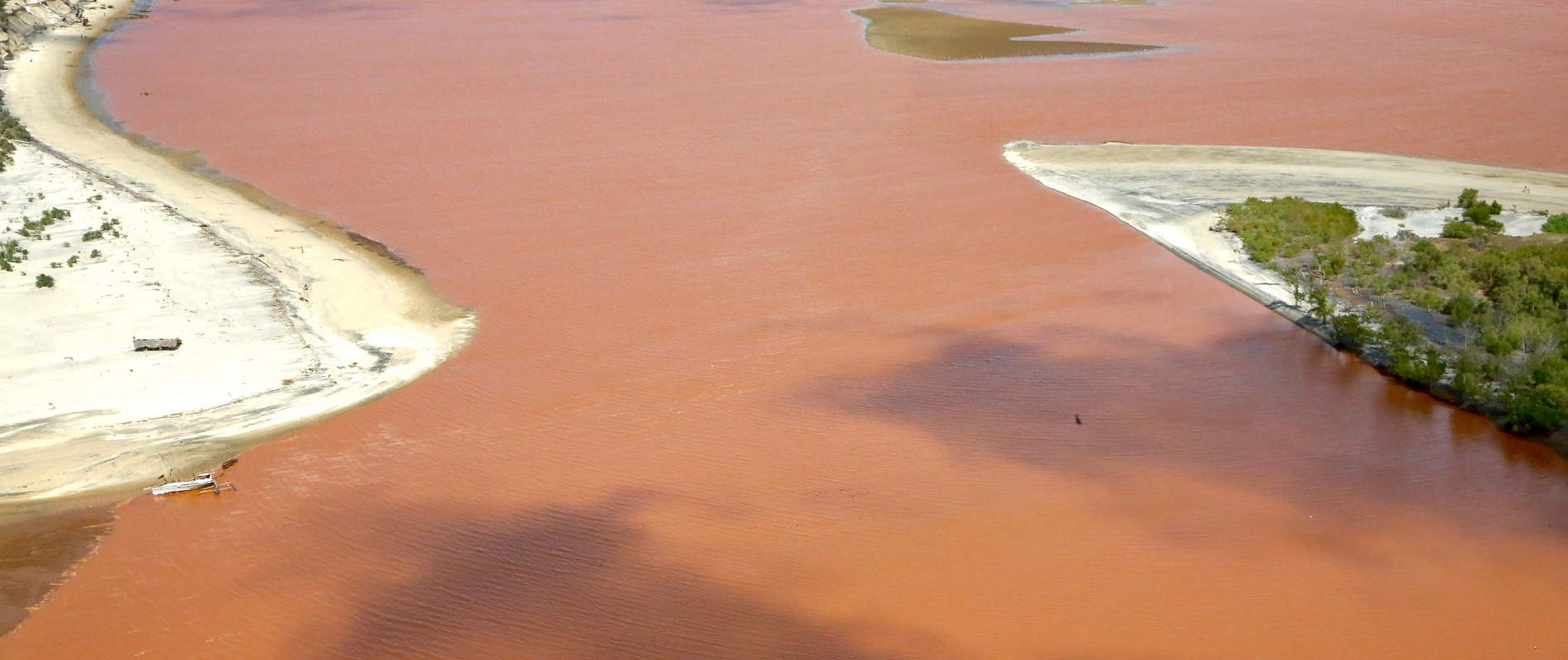On 14th April, DSWT received word, via Raabia Hawa from Walk with Rangers, notifying us of an injured lion that had been seen by rangers on Kipini Conservancy in Lamu district
On 14th April, DSWT received word, via Raabia Hawa from Walk with Rangers, notifying us of an injured lion that had been seen by rangers on Kipini Conservancy in Lamu district. The lion was suffering from a rope snare around its front, right leg, which had caused severe swelling. It had reportedly not moved in 6 days, although had succeeded in killing a buffalo during this time, so was well-fed. Due to the huge distances that would need to be covered to reach the site — a journey that would take well over 10 hours in a vehicle — it was decided that Dr. Poghon would take off at the crack of dawn the following morning in one of the Trust’s Super Cubs for a 2 hour flight instead.
Kipini Conservancy lies just north of the Tana River delta, where Kenya’s largest river empties into the Indian Ocean. Recent rains upcountry have transported millions of tons of red-brown topsoil downstream, so the Tana’s discharge painted dramatic scenes along the beautiful, undeveloped coastline leading up to Kipini. The airstrip was difficult to find, but with some help from Fuzz Dyer, local pilot and owner/manager of Manda Bay Lodge, Neville (pilot) and Dr. Poghon were able to find where the strip had been carved out of a doum palm forest many years ago. The rangers had taken the initiative to start clearing the growth from years of disuse. On approach, Dr. Poghon wondered whether the narrow strip was in fact wide enough to accommodate the wings of the airplane, though, fortunately, with the advantage of perspective, the airstrip widened shortly before the plane reached the tree line. Just after touching down, however, a herd of topi with their young ran in front of the plane. A few tense seconds and one empty brake cylinder later the plane came to a stop metres before colliding with the herd. Luckily the rest of the operation would go much smoother.


After disembarking from the airplane, Dr. Poghon was met by KWS Rangers and the local officer who transported him and his equipment a short distance to where the maneless, male lion was discovered with another buffalo kill. It was obviously strong, but it was immediately visible that it had lost some condition. Uninterested in the vehicle or in moving away from its meal, the lion was easy to dart and after several drowsy minutes, it rolled over in a deep sleep.



After first approaching in a vehicle and confirming that the lion was properly anaesthetized with a prod from his dart gun, Dr. Poghon was satisfied and immediately got to work removing the snare. Had it been a wire or cable snare, the damage might have been much worse, but the rope had still dug deep into the leg, severing one tendon in the process. The paw was very swollen and obviously in a lot of pain, emphasizing the strength of this lion to still be able to bring down two buffaloes in 4 days, unassisted. Once the wound was cleaned, and the lion had been given antibiotics, Poghon was happy that the wound would heal. The paw will lack full dexterity due to the tendon damage, but it should still be functional.



With the lion attended to, the plane continued on to Amu Ranch, where DSWT supports the Lamu Conservation Trust in protecting over 60,000 of pristine coastal habitat. In the absence of aerial coverage, the ground teams have done an exceptional job of keeping illegal activities at bay. Only one small cattle boma was found and a relatively small number of cattle. No evidence of logging — a common sighting a few years ago — was seen anywhere on the ranch. What was evident, however, was the severity of the drought that has been afflicting the region. Several dried up waterholes were seen with the dried up remains of dozens of hippos and buffaloes that got trapped in mud as the last drops of moisture evaporated. Very little grass remains and so far the rains, which were expected in March, have only reached one small corner of the ranch where a few waterholes are attracting the remaining herds of buffalo and topi. Elsewhere, the biggest water pans and estuaries are still parched and desolate. Lamu Conservation Trust is providing water for the wildlife near their headquarters from a borehole, but even this water is slightly salty in the absence of rains. If the rains fail completely, the situation will be catastrophic. Mwalimu Baddi, from LCT, explained that around 160 hippos have so far died of thirst or starvation, many of which drank seawater in the mangroves out of pure desperation.






















